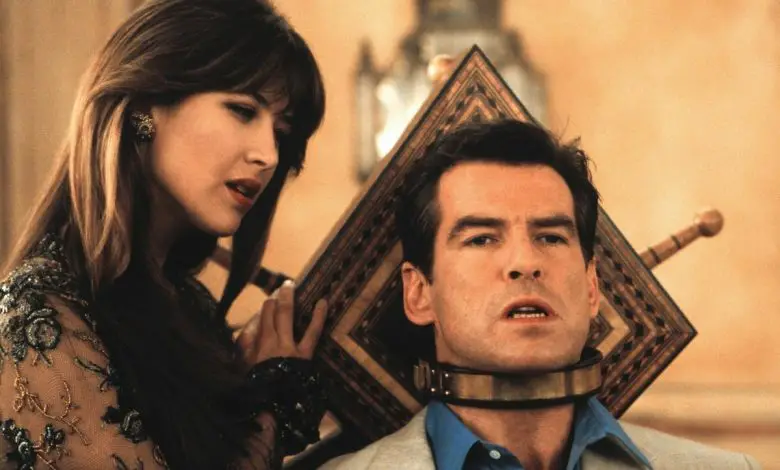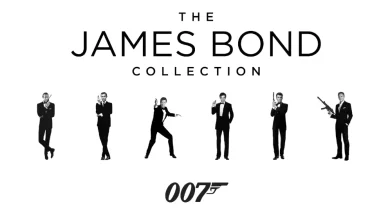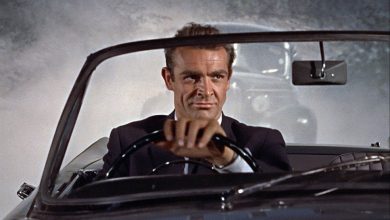
The James Bond franchise, with its thrilling action sequences, suave heroes, and memorable villains, has captivated audiences worldwide for decades. Each film in the series offers its unique blend of suspense, drama, and adventure, creating moments that remain etched in the annals of cinematic history. One such moment is the unforgettable torture chair scene from “The World is Not Enough”. This article delves into the intricacies of this scene, exploring its context, design, impact, and legacy.
The World is Not Enough”, featuring Pierce Brosnan as the iconic spy, is known for its gripping storyline and intense action sequences. However, the torture chair scene stands out for its blend of physical violence and psychological tension. This scene, where Bond is captured and subjected to excruciating pain by the antagonist Renard, is a testament to the film’s exploration of character dynamics and narrative depth.
Key Takeaways
- The torture chair scene in “The World is Not Enough” is a significant moment in the Bond franchise, showcasing the series’ ability to blend action, suspense, and character development.
- The design and functionality of the torture chair reflect the sadistic nature of the villain, Renard.
- The scene is a testament to Bond’s resilience and determination, highlighting his ability to withstand extreme situations.
- The torture chair scene has left a lasting impact on the Bond franchise and has influenced other films within the action and spy genres.
- The concept of a torture chair has its roots in medieval history, adding a layer of historical authenticity to the scene.
James Bond Torture Chair in “The World is Not Enough”
The James Bond series, with its high-octane action, exotic locales, and unforgettable villains, has given us many iconic moments. One such moment that has etched itself into the annals of the franchise is the torture chair scene from “The World is Not Enough”. This scene, featuring Pierce Brosnan as the suave spy, is a study in suspense, tension, and narrative cinema.
Setting the Scene
In “The World is Not Enough”, Bond finds himself at the mercy of the film’s antagonist, Renard, portrayed by Robert Carlyle. Bond is strapped into a torture chair, a device engineered to deliver unbearable pain without causing immediate death. The chair is a testament to Renard’s malevolent nature and his intent to break Bond, both physically and psychologically.
The Torture Chair: A Symbol of Fear
The torture chair from “The World is Not Enough” is a significant prop in cinematic history. Its design is intimidating and practical, mirroring the ruthless efficiency of Renard’s operation. The chair, constructed from cold, unyielding steel, has multiple restraints to immobilize the victim. It is fitted with various tools meant to inflict pain, such as sharp spikes and heated elements.
The Significance of the Scene
The torture chair scene in “The World is Not Enough” is a turning point in the narrative. It underscores Bond’s tenacity and resolve, as he manages to free himself from the chair and overcome Renard. The scene also amplifies the stakes of the film, demonstrating the extreme measures Renard is prepared to take to realize his ambitions.
Behind the Curtain
The creation of the torture chair scene was a considerable challenge. The production team had to conceptualize and construct the chair, choreograph the sequence, and ensure the actors’ safety. Both Pierce Brosnan and Robert Carlyle delivered exceptional performances, contributing to the scene’s intensity and authenticity.
The Scene’s Legacy
The torture chair scene in “The World is Not Enough” has left an indelible mark on the James Bond franchise. It is frequently cited as one of the most memorable scenes in the series and has been referenced and parodied in various media forms.
Medieval Torture Chairs: The Historical Connection
The idea of a torture chair, as depicted in “The World is Not Enough”, can be traced back to the grim chapters of medieval history. During the Middle Ages, different types of torture chairs were used for punishment and interrogation. These chairs, often lined with spikes, caused severe pain and suffering to those forced to sit on them for long durations.
One of the most notorious examples is the Iron Chair, a device studded with sharp iron spikes. The victim would be strapped into the chair, and the pressure would be gradually increased, driving the spikes into their flesh. The design aimed to maximize pain while minimizing blood loss, thereby extending the victim’s agony.
These medieval torture devices have significantly influenced modern cinematic portrayals of torture, including the scene in “The World is Not Enough”. The film’s use of a torture chair can be seen as an acknowledgment of these historical methods of inflicting pain and terror. It serves to intensify the sense of danger and brutality associated with the villain, reinforcing the stakes for the protagonist.
FAQ:
1. Who is the director of “The World is Not Enough”?
“The World is Not Enough” was directed by Michael Apted, a British director known for his work on a variety of film genres. Apted brought a unique perspective to the Bond franchise, blending the traditional elements of action and espionage with character-driven storytelling.
Apted’s direction of the torture chair scene is particularly noteworthy. He skillfully balanced the scene’s inherent violence with a focus on the psychological battle between Bond and Renard. This approach added depth to the characters and heightened the tension of the scene.
Apted’s contribution to the Bond franchise, and particularly “The World is Not Enough”, is widely appreciated. His direction helped to evolve the series while maintaining the elements that make Bond films so beloved by audiences worldwide.
2. How does the torture chair scene contribute to Bond’s character development?
The torture chair scene in “The World is Not Enough” is a crucial moment for Bond’s character development. It showcases his resilience under extreme physical and psychological stress, reinforcing his image as a determined and resourceful spy.
In the scene, Bond is not just battling against the physical pain inflicted by the chair, but also the psychological torment of being at the mercy of his enemy. Despite the odds, Bond maintains his composure and uses his wits to escape, demonstrating his indomitable spirit.
This scene also reveals a more vulnerable side of Bond, adding depth to his character. It reminds us that despite his skills and bravado, Bond is still human and susceptible to pain. This vulnerability makes him more relatable and adds an extra layer of tension to the film.
3. What is the historical significance of torture chairs?
Torture chairs have a long and grim history, dating back to the Middle Ages. They were used as instruments of punishment and interrogation, designed to inflict maximum pain while keeping the victim alive. The use of such devices reflects the brutal methods of law enforcement and punishment during that period.
The design of these chairs varied, but they were typically made of wood or metal and covered with spikes. The victim would be forced to sit or lie on the chair, and the pressure would be gradually increased, driving the spikes into their flesh.
While these devices are a dark part of our history, they have influenced modern depictions of torture in literature and cinema. They serve as a reminder of the cruelty humans are capable of, and their use in films like “The World is Not Enough” adds a sense of historical authenticity to the narrative.
4. How does the torture chair scene compare to other memorable Bond scenes?
The torture chair scene in “The World is Not Enough” stands out for its intensity and psychological drama. While the Bond franchise is known for its action-packed sequences, this scene focuses more on the mental battle between Bond and Renard. This shift in focus makes the scene unique and memorable.
Compared to other iconic Bond scenes, the torture chair scene is less about physical action and more about suspense and tension. It’s a game of cat and mouse, with Bond using his wits and determination to escape a seemingly hopeless situation.
This scene also stands out for its darker tone. While Bond films often feature light-hearted moments and witty one-liners, this scene is unflinchingly brutal, reflecting the high stakes and the ruthless nature of the villain.
5. What was the audience’s reaction to the torture chair scene?
The torture chair scene in “The World is Not Enough” elicited a strong reaction from audiences. Many viewers found the scene intense and suspenseful, praising the performances of Pierce Brosnan and Robert Carlyle. The scene’s brutality and the psychological battle between Bond and Renard added a layer of depth to the film, making it a standout moment in the Bond franchise.
However, the scene also sparked some controversy due to its violent content. Some viewers felt that the scene was too graphic for a Bond film, which traditionally balances action with humor and romance.
Despite these criticisms, the torture chair scene is widely regarded as one of the most memorable moments in “The World is Not Enough”. It has been discussed and analyzed in numerous film studies and articles, attesting to its impact and significance.
6. How did the actors prepare for the torture chair scene?
Preparing for the torture chair scene was a demanding process for both Pierce Brosnan and Robert Carlyle. They had to understand the psychological state of their characters and convey the intensity of the situation through their performances.
Brosnan, as Bond, had to portray a range of emotions, from fear and pain to determination and resilience. He worked closely with the director and the stunt team to ensure that his performance was believable and consistent with his character.
Carlyle, as Renard, had to embody the cold, sadistic nature of his character. He had to convey a sense of menace and control, making the audience believe that he was capable of inflicting such cruelty.
The actors’ preparation and commitment to their roles contributed to the effectiveness of the scene, making it a standout moment in the film.
7. How has the torture chair scene influenced other films?
The torture chair scene in “The World is Not Enough” has had a significant influence on other films, particularly within the action and spy genres. Its blend of physical violence and psychological drama has been emulated in various forms, from direct homages to subtle nods.
The scene’s influence can be seen in films like “Casino Royale”, where Bond is subjected to a brutal interrogation by the villain Le Chiffre. The scene shares many similarities with the torture chair scene, from the use of a unique torture device to the psychological battle between the protagonist and the antagonist.
The scene has also influenced the broader cinematic landscape, contributing to the trend of darker, more realistic portrayals of violence and torture in mainstream films.
8. What is the significance of the torture chair in the context of the film’s themes?
The torture chair in “The World is Not Enough” is not just a device for inflicting pain; it’s a symbol that encapsulates several of the film’s themes. It represents the sadistic nature of the villain, the physical and psychological challenges faced by Bond, and the brutal reality of the world of espionage.
The chair is a physical manifestation of Renard’s power and control. It’s a tool he uses to assert his dominance and break his victims, both physically and psychologically.
For Bond, the chair represents the extreme dangers he faces as a spy. His ability to withstand the torture and escape from the chair underscores his resilience and determination, key traits of his character.
In a broader sense, the chair symbolizes the harsh realities of the world of espionage, a world where violence and cruelty are part of the job. It serves as a stark reminder of the high stakes and the personal toll of Bond’s profession.
9. How does the torture chair scene fit into the overall narrative of “The World is Not Enough”?
The torture chair scene is a pivotal moment in the narrative of “The World is Not Enough”. It serves as a climax of sorts, bringing the conflict between Bond and Renard to a head. The scene is a turning point for both characters and sets the stage for the film’s final act.
For Bond, the scene is a test of his physical and mental strength. His ability to withstand the torture and escape from the chair is a testament to his resilience and resourcefulness, key traits of his character.
For Renard, the scene reveals his true nature. His use of the torture chair shows his sadistic side and his willingness to inflict pain to achieve his goals.
The scene also heightens the stakes of the film. It shows the lengths that Renard is willing to go to achieve his goals, making his threat more tangible and immediate.
10. How does the torture chair scene reflect the evolution of the Bond franchise?
The torture chair scene in “The World is Not Enough” reflects the evolution of the Bond franchise in several ways. It showcases a darker, more realistic portrayal of violence, a departure from the more stylized action sequences of earlier films. This shift reflects the changing tastes of audiences and the influence of other action and spy films.
The scene also highlights the increased focus on character development in the Bond films. The scene is not just about the physical action; it’s also about the psychological battle between Bond and Renard. This focus on character and psychology adds depth to the film and makes the characters more relatable and complex.
Finally, the scene reflects the ongoing exploration of Bond’s character. It shows a more vulnerable side of Bond, reminding us that despite his skills and bravado, he is still human and susceptible to pain. This exploration of Bond’s vulnerability has become a recurring theme in the franchise, adding depth and complexity to his character.
Conclusion
The torture chair scene in “The World is Not Enough” is a masterclass in cinematic storytelling. It combines intense action, psychological drama, and character development to create a memorable moment in the Bond franchise. This scene not only contributes to the film’s narrative but also leaves a lasting impact on the audience, making it a standout moment in the series.
The exploration of this scene provides valuable insights into the art of filmmaking and narrative construction. It showcases the importance of props, character dynamics, and historical context in creating impactful scenes. As we continue to explore and analyze such moments, we gain a deeper appreciation for the intricacies of cinema and the power of storytelling.
You can also visit Medieval Torture Meseum Her















